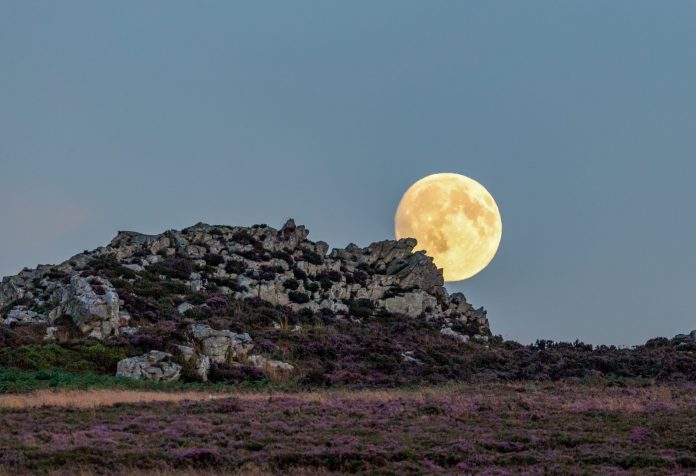
This Halloween photographers have the perfect backdrop to put their skills to the test to create some wonderfully ominous shots thanks to the Blue Moon. Perfectly timed for spooky season, the Blue Moon will illuminate the sky on Saturday 31st October, reaching every corner of the earth and all time-zones for the first time since 1944. To help you get the perfect shot, nature photographer Andrew Fusek Peters, whose work regularly appears in national newspapers and magazines, shares his six top tips for photographers on the hunt for a creative challenge.
Right place, right time
“The first step is to know where and when the moon is going to rise. In the past, that involved a lot of tedious calculations, but these days software can do the work for you. I use The Photographer’s Ephemeris 3D, a light visualisation tool for outdoor and landscape photographers. This allows you to plan, within a 50-metre line so you don’t have to go too far from home, where you want to be, and see when the moon will rise and what it will hide behind.”
Picture the narrative
“I prefer to photograph the moon as part of a wider scene to tell a story. I’m always looking for an interesting foreground – to put the moon within a landscape or a built environment. This can be more of a creative challenge than the close-ups of the moon we often see on social media. My top tip would be to shoot in RAW to ensure you still get the moon, and the foreground in all its glory.”

Trust your creative instincts
“The moon is like a species, like wildlife. It’s extremely shy, so when it comes to the actual shoot you have to think on your feet. My 2016 picture of the supermoon which made the front-page UK national newspaper The Times very nearly didn’t happen. I’d abandoned my shoot and was heading home. Then suddenly, driving towards Church Stretton in Shropshire, I saw the clouds clear. The moon was almost directly behind what I now know is a volcanic structure called Three Fingers Rock. I thought: ‘Oh my gosh’. With my Canon EOS 7D Mark II, a Canon EF 500mm f/4L IS II USM lens plus a Canon Extender 2x III giving me 1600mm I knew I had as much reach as I could humanly get. I used a hedge as a tripod and fired off three shots in a row. And because I knew my focus point – rather than stick the moon in the centre of the picture, I wanted to have a leading line – the first shot was the one.”
It’s all in the hands
“Avoid using a tripod. You need to be able to respond very quickly and move your position so you can place the moon exactly where you want it in the frame – just like with the distant sunset over hills. You do not have a lot of time, because the light that you want is the last light of the day: dusk light. So, to get your shot, you just have to go handheld. If you’re using a big telephoto lens and extender and have to respond fast, I’d recommend sitting down and using your knee as an improv tripod. When it comes to your settings, you want to expose for the moon, which means you can keep your shutter speed and ISO fairly low. In general, the higher the ISO, the more difficulty you will have in recovering shadow detail. If you’re shooting the foreground as a silhouette, then you don’t have to worry about this as much.”
Use the right kit
“When you expose for the moon, the amount of landscape detail you can capture will depend on the quality of your camera. With my Canon EOS 7D Mark II, I know I’m not going to have any issues with focus, and if I’ve got some light on the landscape, it allows me to recover a massive amount of detail in the shadows. When it comes to lenses, go big. If you want a big moon in your pictures you want big lenses.”
Trust the process
“Once you’ve got your RAW image, the moon will still look quite blown out. Pay attention to highlights, whites and shadows, as well as radial filters to bring out detail. When it comes to your foreground, work with shadows and graduated filters. As Ansel Adams famously said: ‘The negative is the score and the print is the performance’, and the same thing applies in moon photography when it comes to your RAW and processed files.”
Biography:
Andrew Fusek Peters is a wildlife and landscape photographer whose work is mainly focused in Shropshire, UK. He has had over 250 photos and features sold to UK national newspapers, including twice on the cover of the Times. This includes his recent supermoon photo which also made The Sun, The Daily Mail, The Daily Express and The Daily Mirror.
For the last five years he has been on commission to the National Trust and Natural England on Stepping Stones, a project to record species and landscape between the Stiperstones and the Long Mynd in the UK. Andrew has also been a finalist for Wildlife Photographer of the Year and has won Highly Commended in British Wildlife Photographer of the Year twice.


































